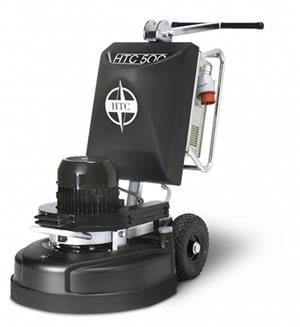Concrete floors, especially factory floors, break down over time. Learn how to restore factory floors and the concrete resurfacing process.
What Causes Wear and Tear of Concrete Floors
Concrete floors in industrial settings and garages are subject to intense abuse. Below are some examples of how concrete floors can break down.
Traffic: A significant number of people treading on it can cause damage to the surface. This wear and tear can require concrete floor resurfacing to restore its durability and appearance.
Objects: Dropping or throwing heavy objects causes the floor to chip and cra ck. Such impacts mar the floor’s aesthetics and can lead to structural weaknesses, making concrete floor resurfacing essential for repair.
ck. Such impacts mar the floor’s aesthetics and can lead to structural weaknesses, making concrete floor resurfacing essential for repair.
Contamination: Chemicals and other spills can contaminate the floor’s structure and may even weaken it. In these cases, resurfacing the concrete floor to seal it against future contamination may be part of the restoration process.
Bad Construction: At times, faulty construction or curing may mean that the concrete floor is damaged from the start and would require restoration. Early intervention through concrete floor resurfacing can mitigate further degradation.
Restoring Concrete Factory Floors
Restoring concrete factory floors is cost-effective and a sustainable choice. It is not necessary to spend a fortune on reconstructing a concrete floor. Using the right equipment and restoration products, the floor can be rejuvenated to be as good as new.
By opting for restoration, you significantly reduce waste and the carbon footprint of manufacturing and laying new concrete. Moreover, a well-restored floor can enhance operational efficiency by providing a smoother, safer surface for daily activities.
This process revitalizes the appearance of your floors and extends their lifespan, offering an excellent return on investment. Choosing the path of restoration with high-quality materials and the latest techniques ensures that you prepare your floors to withstand the rigors of industrial use while maintaining their integrity and appearance for years to come.
Tools Needed
To restore concrete floors, you will need the following.
- Pressure washer
- Concrete cleaner
- Push broom
- Floor squeegee
- Concrete floor grinder with dust shroud
- Concrete floor patch filler
Concrete Resurfacing Process
Once you have the proper tools, follow this process to restore your concrete factory floors.
- Remove Protruding Objects: Chip the surface of the concrete to remove any high material that protrudes from the overall level.
- Level the Surface: Grind the surface using a suitable concrete grinding machine. Opt for the concrete profiling method, which leaves deep scratches in the concrete and allows leveling products and adhesives to have a good grip. Use the grinder with a dust shroud to prevent the hall or room from being filled with dust.
- Clean the Floor: Use a concrete cleaner and water to clean the floor. Use a pressure washer to remove loose concrete, debris, algae, paint, or mildew.
- Fill in Low Spots: Use a concrete floor patch filler to fill the low spots. Make sure the area is wet or damp. Apply with a putty knife. Level this new concrete to its edges for a smooth finish and leave it for about ten minutes.
- Level Out the Surface: Once the concrete hardens slightly, use a steel finishing trough to remove excess mortar and clean the surface.
- Resurface the Entire Surface: You can use a squeegee with concrete resurfacer material. Choose high-quality materials that suit the external temperature and the nature of wear and tear expected for durability while restoring concrete floors.
How do you clean commercial cement floors?
Before resurfacing a concrete floor, thoroughly clean the commercial cement floors. Start by removing surface debris and dust using a high-quality commercial dust mop.
For deeper cleaning, use a neutral-pH floor cleaner mixed with water. Depending on the floor size and the level of soiling, apply it with a mop or automatic floor scrubber. Rinse the floor well with clean water to remove any cleaner residue and allow it to dry completely.
For stubborn stains or built-up grime, consider using a concrete cleaner designed for heavy-duty cleaning, following the product’s instructions closely. Regular maintenance and proper cleaning are essential to extend the life of the concrete floor and prepare it for resurfacing or other restoration processes.
Wrapping It Up: Secure Your Floor’s Future
Restoring and maintaining concrete factory floors is both an art and a science. From addressing wear and tear to resurfacing for a brand-new look, revitalizing your concrete surfaces requires precision, the right tools, and knowledge.
Should you have any questions or need expert advice on concrete floor resurfacing or maintenance, Runyon Surface Prep is here to help. Don’t hesitate to reach out and secure your floor’s future with our professional guidance and support.